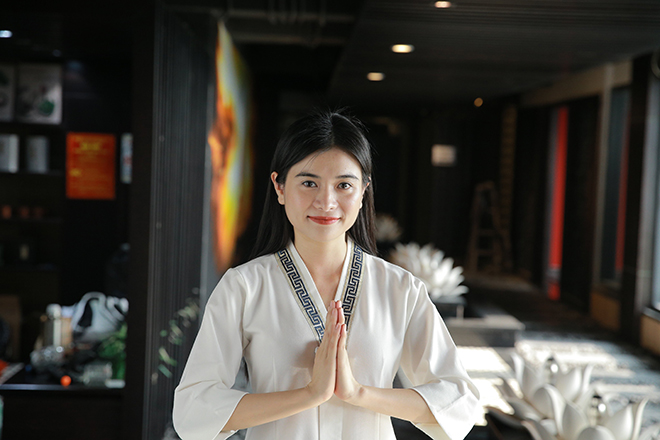The Story from the Himalayas: Frozen Hands, Fear, and the Boundless Power of Will
“...Ahh, it hurts… it hurts so much… Eli, Eliiii, Sherpa, Sherpaaaa, my hands hurt too much! I can’t move them anymore, I’ve lost feeling in them… they’re freezing, it’s excruciating…” “This isn’t good, this isn’t good at all.” “Her hands are completely frozen!” “Hang in there, let me help you. Don’t cry—if your tears freeze, it’ll make it harder to breathe.” “Urrrgh, the pain is unbearable! Are my hands still there?!” “Stay focused. You’ll be okay, just don’t give up…”
As I sit here writing this journal entry, the fear from that moment still reverberates within me, crystal clear and haunting. It was a terrifying ordeal. Today, I thought I had lost my hands to the biting cold of -33°C on this Himalayan expedition. Today, I experienced a fear that will likely stay with me forever—a fear of losing a part of myself.
Conquering the Himalayas is not just a battle against treacherous terrain, harsh weather, and thin air but also a profound test of human endurance. Regardless of who you are—an ordinary person, a seasoned athlete, or even a local Sherpa accustomed to the brutal cold—nature here has the power to bring anyone to their knees. Yet, beyond these relentless challenges, the difficulty of my journey was amplified by the sudden onset of extreme weather conditions.
According to the locals and our guides, the temperature plummeting this drastically at such an altitude was extraordinary. At our overnight stop, at an elevation of just under 5000 meters, the temperature dipped below -30°C—a level usually experienced at heights near 8000 meters. Adding to this was an unusual snowstorm, a phenomenon that the Sherpas said hadn’t occurred in years. Over the past two days, a massive snowstorm swept down from Kala Patthar, driving temperatures even lower, obscuring visibility, and making movement perilous. We had to stay at the shelter for two extra days for safety, delaying our schedule. When the storm passed, we were forced to trek 10–11 hours daily to make up for lost time, sacrificing a crucial acclimatization day to avoid altitude and temperature shock.
These compounded challenges tested me to my core, especially as someone from a tropical climate with no prior training for such conditions.
Today marked the second day of our race to catch up on the itinerary. We set out at dawn, and the air was still brutally cold, below -30°C. As I stepped out of the teahouse to begin the day, my body felt energized thanks to my daily practice of MeenaKee and Hamaa Breath, which helped regulate my body temperature and energy levels in these extreme conditions.
However, my physical limitations posed a significant challenge. The local diet—mainly meat, eggs, dairy, starches, and dried vegetables—was difficult for me to consume due to my strict dietary regimen. For the past three days, I had eaten almost nothing except for a few apples and hot tea. My Sherpa was deeply concerned, fearing I wouldn’t have the strength to continue. But with the help of MeenaKee and Hamaa Breath, I managed to stay alert and physically capable of pressing on.
This morning, I extended my breathing practice, so I felt ready to move forward. As the countdown began for my ultimate challenge—meditating for 60 minutes without protective gear atop the snowy peak—I decided to forgo my heavy snow gloves in favor of specialized thermal gloves to acclimate my body. This decision, however, brought me face-to-face with a chilling fear: the real possibility of losing my hands.
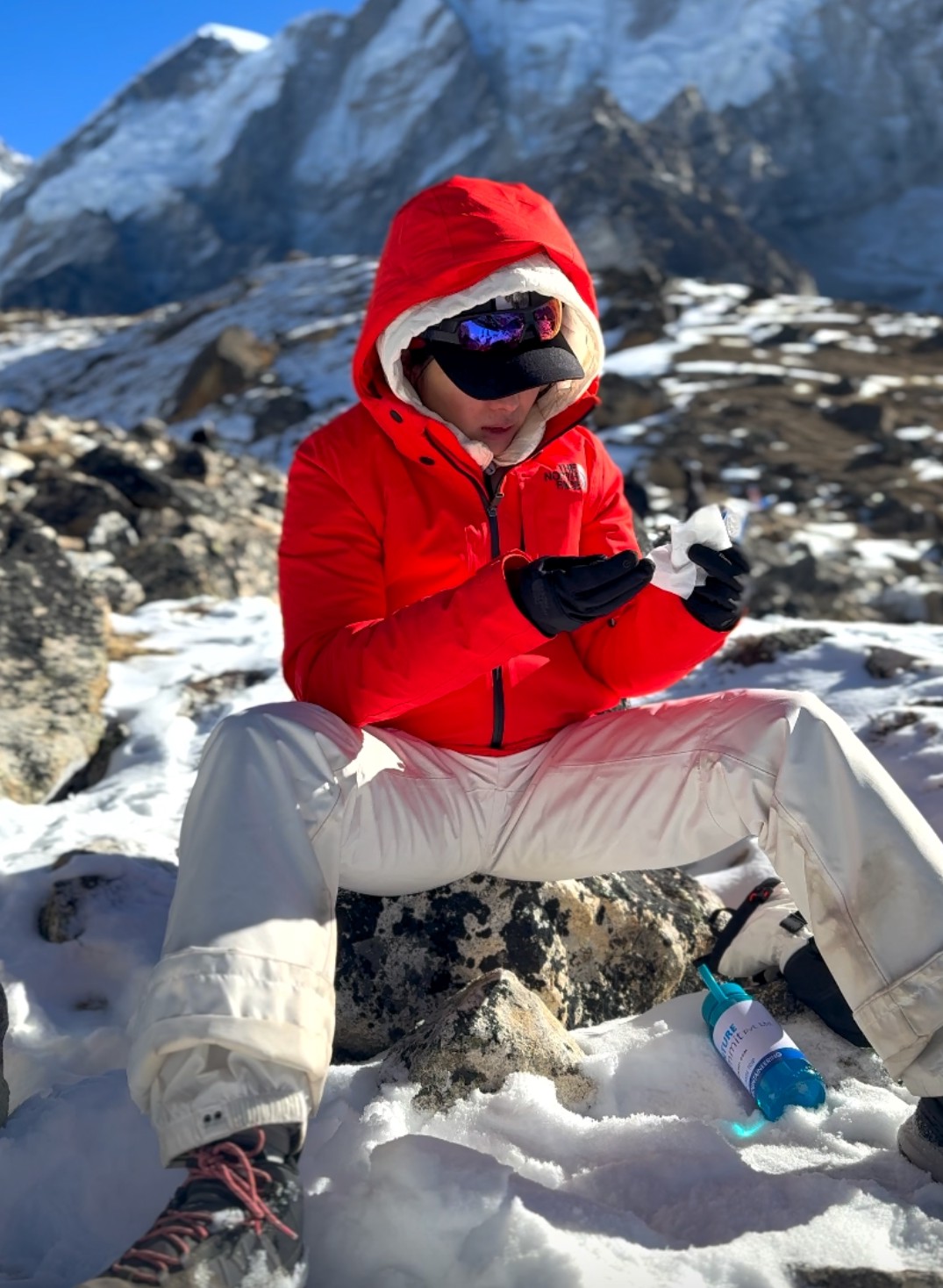
When I had been moving for about 10 minutes, I began to feel sharp, piercing sensations in both hands. That icy pain grew intense and quickly vanished, replaced by an alarming numbness. My hands ached down to the bone—a pain I never could have imagined. I could no longer feel them, as if they had suddenly become lifeless and disconnected from my body’s command. They wouldn’t move. The excruciating pain made me cry out in fear and sob uncontrollably.
I am a woman, and my hands are precious—not just for myself but also for healing and treating the patients who come to me. In that moment, I was truly terrified. It happened so quickly. The overwhelming chill invaded my mind, rendering me incapable of coherent thought. Tears streamed down my face, only to freeze instantly, blurring my vision and making it difficult to breathe through my nose.
My Sherpa rushed over, urgently warming my hands and reassuring me. Even after nearly 20 minutes, I still couldn’t move them. Yet the Sherpa insisted that I endure the pain and continue. We couldn’t stop for too long, as it would put my entire body at risk. We had to keep moving to restore circulation and make it to the next shelter before the dangers of nightfall set in. (It was only later that I learned my Sherpa had lost one of his fingers to a similar accident while attempting an ascent over 8,000 meters. By the time he managed to warm his hands, his pinky finger had already frozen solid and had to be amputated. He now has only nine fingers.)
I forced myself to keep walking, swallowing my tears and enduring the agony. The thin air made my lungs work twice as hard, and the bone-chilling cold froze every ounce of my willpower. Despite wearing full specialized protective gear, I could feel the frost creeping into my body, layer by layer. At that moment, my mind was as blank as the vast, snowy peaks before me. The beauty I once admired had vanished, leaving behind only one emotion: fear.
Frostbite—something I had only ever seen happen to others on television—was now claiming my own body. When temperatures drop below -0.55°C, blood in the capillaries begins to freeze, circulation slows, and extremities such as fingers, toes, and exposed skin become the first victims. If left untreated, the cells die, leading to necrosis. This was not just a temporary pain; it was the grim reality of potentially losing a part of my body forever.
In that moment of terror, faced with the possibility of losing a part of myself, I nearly gave up. I kept asking myself over and over: Can my body withstand this any longer? Can I complete the even more grueling challenge that awaits at the summit? Why am I doing this? I want to go back. I don’t want to continue anymore.
When moving in full specialized gear already poses the risk of frostbite, what would happen when meditating in complete stillness without sufficient warmth?
That’s right—this fear stirred an even greater terror within me for the challenge ahead: meditating in complete stillness amidst the freezing cold of the Himalayas, with no protective gear whatsoever. That day, even though I was constantly moving—a way for the body to generate heat—I still faced the threat of frostbite, a highly lethal condition that can cause necrosis in a very short time. So, what would happen if I sat motionless for an extended period?
I couldn’t help but ask myself: "Can the mind overcome the fear that is so present here and now, the danger that has already shown itself? Will I dare to continue, knowing this pain and the uncertainty of success in the most grueling challenge yet? Or will I give up?"
The human core body temperature (CBT) typically stays stable at around 37°C, the ideal range for organs to function effectively. In sub-zero temperatures, the risk of hypothermia rises dramatically. At -34°C, without adequate warmth, CBT can drop to as low as 10°C. More critically, when outdoor temperatures plummet to -40°C to -45°C, even a healthy person can experience severe hypothermia within 5–7 minutes.
The severity of frostbite depends on various factors, including ambient temperature, wind chill, and duration of exposure. At -18°C, with wind chill reducing the perceived temperature to -28°C, frostbite can occur within 30 minutes. At -26°C, with wind chill dropping the perceived temperature to -48°C, the risk escalates significantly, with frostbite possible in just 5 minutes of exposure. (And during this journey, I faced both snowstorms and abnormally low temperatures.)
When the body succumbs to hypothermia, organ function begins to deteriorate:
- Heart: Efficiency decreases, leading to poor blood circulation and a state of shock.
- Liver and kidneys: These organs may cease to function when deprived of sufficient blood and oxygen.
- Brain: Heat loss impairs cognitive function and judgment, causing disorientation or unconsciousness.
Hypothermia progresses through stages, assessed by CBT levels:
- 34°C: Early symptoms include shivering, fatigue, and mild confusion—the body’s natural response to generate heat and conserve warmth.
- 33°C: Signs like memory loss and disorientation become more pronounced.
- 28°C: The individual may fall unconscious, reaching a critical threshold requiring urgent intervention.
- Below 21°C: The body enters deep hypothermia; organ systems shut down, and the risk of death becomes extremely high.
Hypothermia is not merely a physical condition—it is a wake-up call about humanity’s fragility in the face of nature.
Humans are capable of extraordinary feats, and our ancestors adapted to extreme climates for survival. Even today, indigenous peoples and those who train rigorously can condition their bodies to endure harsh conditions. However, most of us live in comfort and convenience, shielded from nature’s extremes. This very convenience has dulled our body’s natural defenses, rendering us weak and vulnerable in the face of the wild.
The story of hypothermia is not just a reminder of the body’s limits but also a lesson in respecting nature and being thoroughly prepared for its challenges—especially as scientists warn of increasingly adverse conditions.
Fingers and toes are the most susceptible to frostbite. When temperatures drop, the body prioritizes blood flow to vital organs like the heart and brain, reducing circulation to the extremities. This makes fingers and toes particularly vulnerable. Even feet, often protected by shoes and socks, can lose heat rapidly due to sweat or evaporation, increasing the risk of frostbite.
You might think, "Just wear more layers." But in my experience, that is not always the smartest solution. The cold here tested not only my hands but left harsh marks on my entire body:
- Chronic headaches: At altitudes above 5,000 meters, the reduced air pressure exerted intense stress on my brain, causing relentless, hammering pain.
- Nosebleeds: The cold and dry air cracked the lining of my nose, causing bleeding with every strong breath.
- Muscle paralysis: The frost stiffened my joints, turning each step into a battle against my own body.
The Limits of the Mind and a Lesson from the Himalayas
You see, sometimes we speak boldly, full of determination. Sometimes, we project immense courage. But when confronted with excruciating pain and overwhelming fear, our bravery is truly tested. How many would give up?
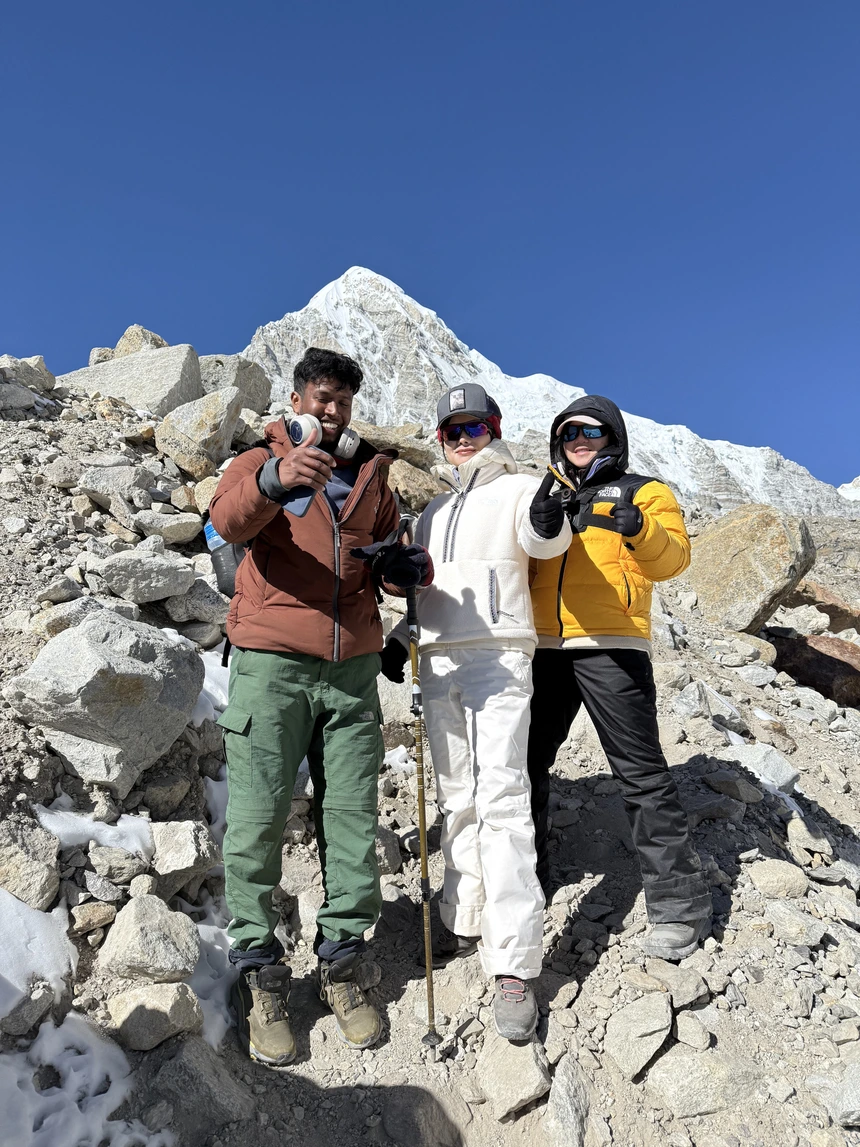
You cannot fully grasp the harshness of the environment through a screen. You cannot truly feel the pain through these words—but you can imagine it. Crossing this threshold, I understood more deeply the mindset of those who stay within their comfort zones: sheltered in well-equipped apartments, surrounded by artificial luxuries.
They—those who criticize, scoff, and dismiss warnings while wrapped in thick blankets, heaters blasting, complaining about temperatures that barely drop below freezing—don’t realize how fragile they are. Should calamity strike, should the electricity fail, where would they find warmth, clothing, or the comforts they take for granted? What remains is their vulnerable body, trembling and succumbing to the unforgiving elements.
I do not wish for anyone to experience that. I feel compassion for those who unknowingly delude themselves, hiding a deep fear they may not even recognize. Leaving behind the conveniences that contribute to the extreme changes in our environment—what will they have left?
When I realized my hands might never regain their sensation, the thought of giving up crossed my mind. But in that moment, I remembered why I began this journey—not to prove anything to anyone, but to prove to myself that humanity can surpass its limits.
Standing amidst the vast, unforgiving Himalayas, I told myself:
"If I stop now, I will live in fear forever, like so many others. But if I take another step forward, I will at least live with pride and perhaps inspire hope in others."
I overcame the fear. I endured the unspeakable pain. Each step was no longer just movement—it became a testament to my willpower and determination. I refused to let the cold freeze my spirit.
And the miracle is this: when you confront the seemingly impossible, you discover a strength within yourself that you never knew existed.
The Ice Meditation Challenge – The Ultimate Test

The upcoming challenge is the pinnacle of everything, a trial I dare to declare that no ordinary person could undertake, let alone confront: one hour of immobile meditation in the freezing cold atop the snow-capped peaks of the Himalayas, without any protective gear. This is not merely a test of mental strength but a matter of life and death.
Tibetan monks can accomplish this feat after decades of rigorous training—but I am not one of them. What I have is an unshakable belief in the immense power of human will and the confidence that my methods can achieve the unimaginable.
As the first, and perhaps the only, Vietnamese individual to attempt this challenge, I hope to inspire you. This story is shared with a singular message: Never underestimate the power of your mind. In moments that seem insurmountable, it is our will that propels us through adversity. Let the indomitable spirit of our nation, forged in your blood, rise within you. Dare to face the greatest challenges and hardships with true courage.
If I can continue with numb, frozen hands and dare to confront an ordeal a thousand times more daunting, then you, too, can overcome the tremendous challenges in your life. And if the human spirit can endure and triumph over the harshness of the Himalayas, then truly, nothing is impossible.
Vashna Thiên Kim

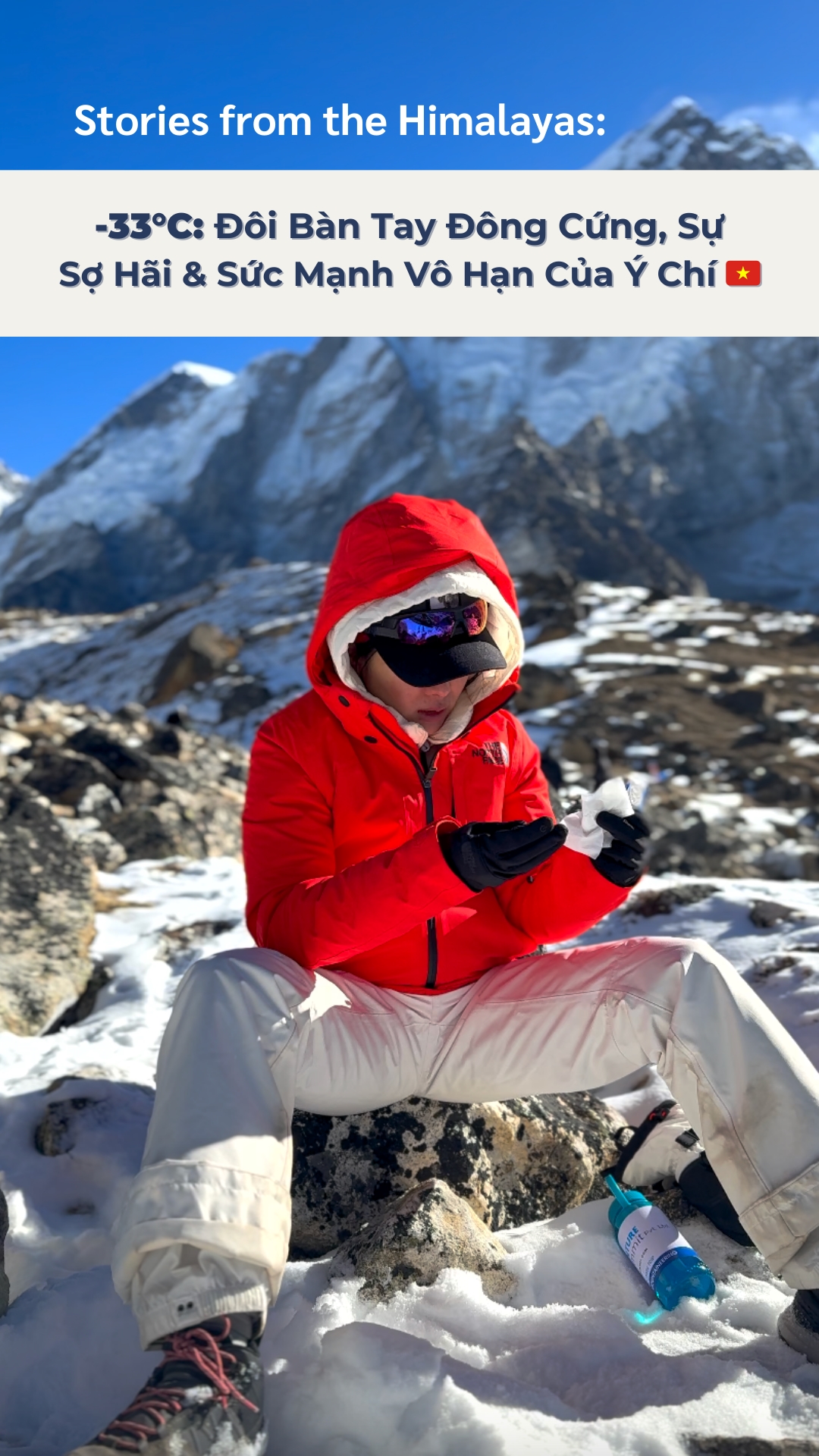
.JPG)
, trên đường lên Dingboche.jpg)

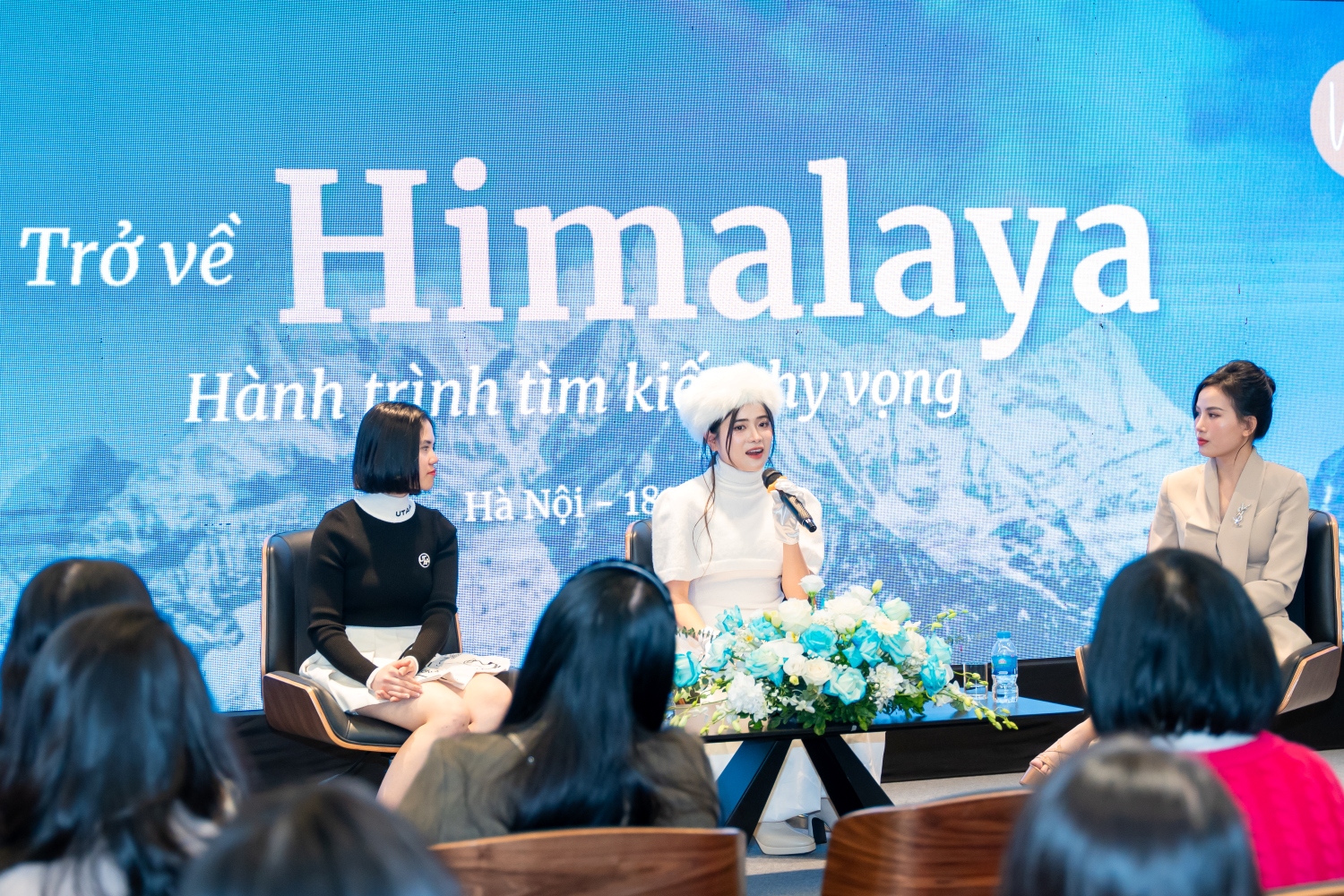
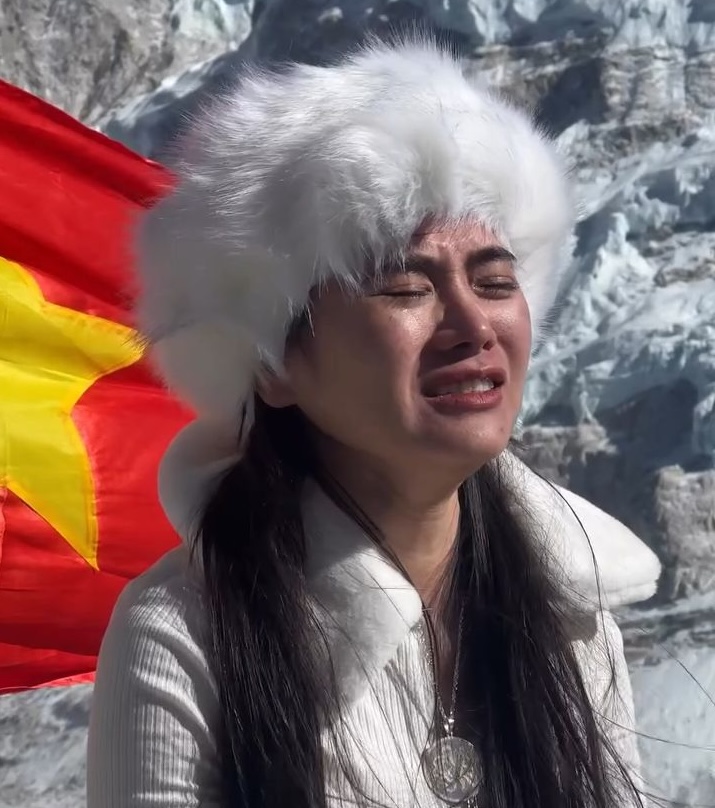
, trên đường lên Dingboche.jpg)
